Authentic Dominican mangu is a simple breakfast dish of mashed green plantains, traditionally served with fried cheese, salami, and onions. This complete guide delivers exactly what home cooks need: a foolproof traditional recipe followed by 7 globally inspired variations with practical tips you won't find elsewhere.
Unlike generic recipes, we reveal why certain techniques work (based on plantain starch science) so you can perfect your mangu every time - starting with the authentic Dominican method before exploring creative twists.
Table of Contents
- What Is Mangu? (Authentic Dominican Breakfast)
- Simple Traditional Mangu Recipe
- 3 Most Common Mangu Mistakes (and Fixes)
- Why These Techniques Work: Plantain Science Made Simple
- 7 Global Flavor Variations (Step-by-Step)
- Texture Troubleshooting Guide
- Spice Timing Cheat Sheet
- Frequently Asked Questions
What Is Mangu? (Authentic Dominican Breakfast)
Mangu is the Dominican Republic's national breakfast - boiled green plantains mashed with their cooking water until creamy. Served with los tres golpes ("the three hits"): fried cheese, salami, and pickled red onions.
Unlike sweet ripe plantains, green plantains used for mangu are starchy and neutral in flavor, creating the perfect canvas for savory accompaniments. The texture should be smooth but substantial - never watery or gluey.
Simple Traditional Mangu Recipe
Authentic Dominican Mangu (Serves 4)
- 4 green plantains (peeled, cut into 2" chunks)
- 4 cups water + 1 tbsp salt
- 2 tbsp butter or oil
- Serving: Queso frito (fried cheese), salami, pickled onions
- Boil: Cover plantains with salted water. Boil 15-20 minutes until fork-tender (not mushy)
- Reserve: Save 1 cup starchy cooking water before draining
- Mash: Return to pot with butter/oil. Mash with cooking liquid until creamy (add water as needed)
- Serve: Plate with los tres golpes on top
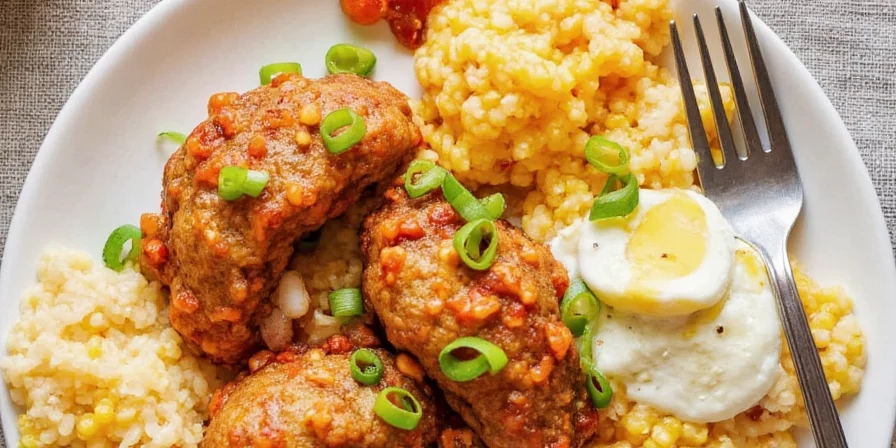
3 Most Common Mangu Mistakes (and Fixes)
| Problem | Why It Happens | Quick Fix |
|---|---|---|
| Watery texture | Over-boiling or adding too much liquid | Return to low heat 2-3 minutes while stirring to evaporate excess moisture |
| Gluey consistency | Cooling without enough fat (see science section) | Stir in 1 tbsp butter while still hot - never after cooling |
| Bland flavor | Salting only at end (salt can't penetrate) | Always boil plantains in 2% salt water (1 tbsp per 4 cups) |
Why These Techniques Work: Plantain Science Made Simple
Green plantains contain resistant starch that transforms when cooked. Here's what actually matters for perfect mangu:
- Salt during boiling: Penetrates plantain cells as starches gelatinize (critical for flavor)
- Fat during mashing: Prevents starch retrogradation that causes gluey texture when cooled
- Acid at serving: Brightens flavors without breaking down starch structure
You don't need chemistry knowledge - just follow these timing rules for perfect results every time.
7 Global Flavor Variations (Step-by-Step)
Once you've mastered the traditional version, try these chef-approved twists. Each includes exact spice measurements and timing.
1. Smoky Cumin Mangu (Best for Beginners)
Add during mashing: 1 tsp cumin + ½ tsp smoked paprika + 1 tbsp butter
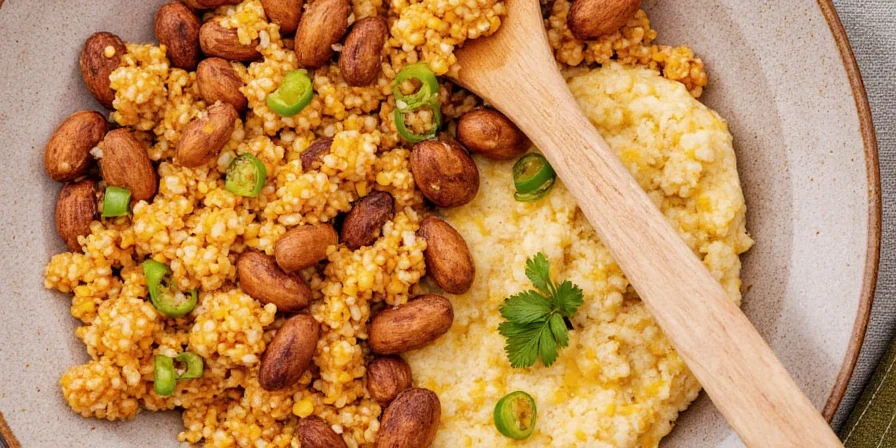
Pro tip: Add spices while mashing - don't stir in later. The heat activates flavor binding.
2. Caribbean Jerk Mangu
Add during mashing: 1 tsp jerk seasoning + 2 tbsp coconut milk

Pro tip: Use real allspice berries (pimento) for authentic flavor - not pre-mixed jerk seasoning.
3. Cheesy Jalapeño Mangu
Add after mashing: 1 finely chopped jalapeño + ¼ cup shredded cheddar
Pro tip: Fold cheese in after mashing to maintain creamy texture - adding during cooking makes it grainy.
4. Mexican Fiesta Mangu
Add during mashing: 1 tbsp taco seasoning + juice of ½ lime
Pro tip: Add lime juice AFTER mashing to prevent starch breakdown and mushiness.
5. Italian Herb Mangu
Add after mashing: 1 tsp dried oregano + 2 tbsp olive oil + Parmesan
Pro tip: Fresh herbs turn bitter when cooked with starches - always add after mashing.
6. Indian Masala Mangu
Add during mashing: 1 tsp mustard seeds + ½ tsp turmeric + 1 tsp curry powder
Pro tip: Bloom spices in oil FIRST, then fold into hot mangu for maximum flavor.
7. Thai Coconut Mangu
Substitute: Coconut milk for cooking water + 1 tbsp red curry paste after mashing
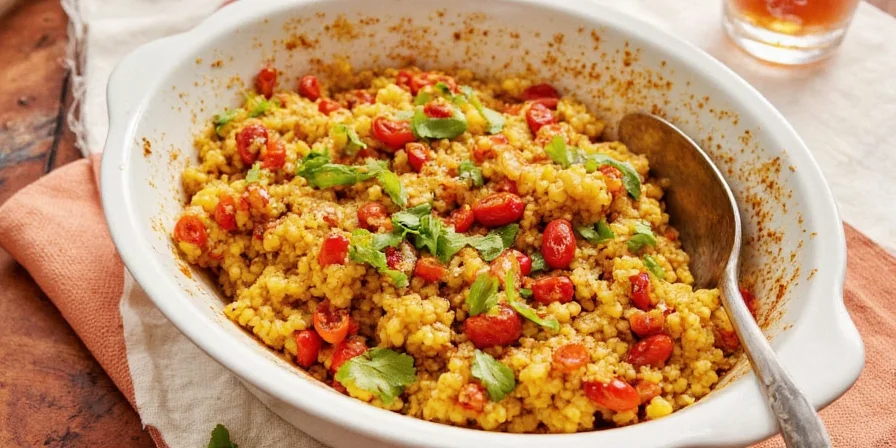
Pro tip: Use full-fat coconut milk - light versions separate and create watery texture.
Texture Troubleshooting Guide
| If Your Mangu Is... | Do This Immediately | Prevention for Next Time |
|---|---|---|
| Too watery | Return to low heat 2-3 min while stirring | Boil uncovered last 5 minutes; reserve less cooking liquid |
| Too dry | Add reserved starchy water 1 tbsp at a time | Save extra cooking liquid before draining |
| Gluey/sticky | Stir in 1 tbsp butter while still hot | Always add fat DURING mashing while hot |
| Bland | Top with flavored oil (garlic/chili) | Boil in properly salted water (2% salinity) |
Spice Timing Cheat Sheet
| Spice Type | Add When | Amount (Per 4 Plantains) | Best Pairing |
|---|---|---|---|
| Dry spices (cumin, paprika) | During mashing while hot | 1 tsp | With butter/oil |
| Fresh chilies | After mashing | 1 finely chopped | With cheese |
| Dried herbs | During mashing | 1 tsp | With fats |
| Fresh herbs | At serving | 2 tbsp chopped | As garnish |
| Acids (lime, vinegar) | At serving | Juice of ½ fruit | With fresh herbs |
Frequently Asked Questions
What's the difference between mangu and mashed potatoes?
Mangu has a starchier, more substantial texture than potatoes. Green plantains contain resistant starch that creates a creamier yet more cohesive mash that holds shape better - perfect for serving with fried accompaniments.
Can I use ripe plantains for mangu?
No. Ripe plantains contain sugar that caramelizes during cooking, creating a sweet, mushy texture. Authentic mangu requires green (unripe) plantains for proper savory texture and structure.
Why is my mangu sticking to the pot?
This happens when starches over-concentrate. Solution: Always add fat during mashing while hot. Prevention: Use enough cooking liquid (plantains should be fully submerged) and stir occasionally while boiling.
How do I reheat mangu without ruining texture?
Add 1 tsp water per serving and reheat gently in microwave at 50% power. Stir every 30 seconds until warmed through. Never reheat at full power - this causes starch retrogradation and gluey texture.
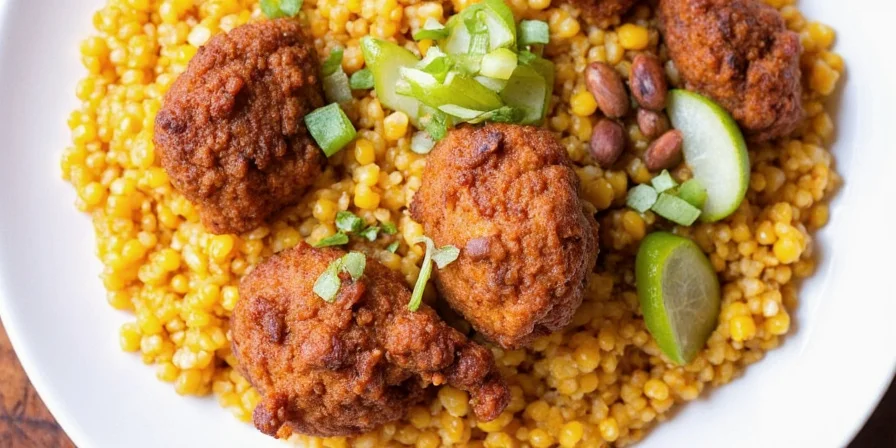
Master authentic mangu by focusing on proper plantain selection, boiling technique, and fat incorporation. Once you've nailed the traditional version, experiment with global variations using our timing guidelines. The perfect texture - creamy but substantial - comes from respecting plantain starch science without overcomplicating the process.

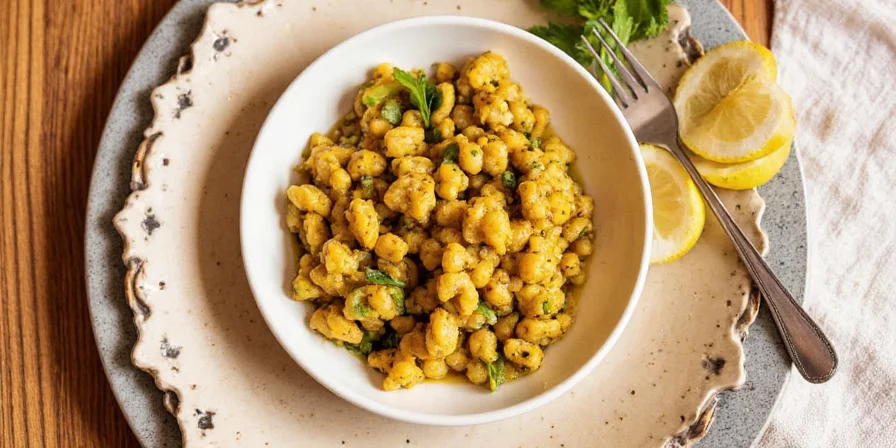









 浙公网安备
33010002000092号
浙公网安备
33010002000092号 浙B2-20120091-4
浙B2-20120091-4